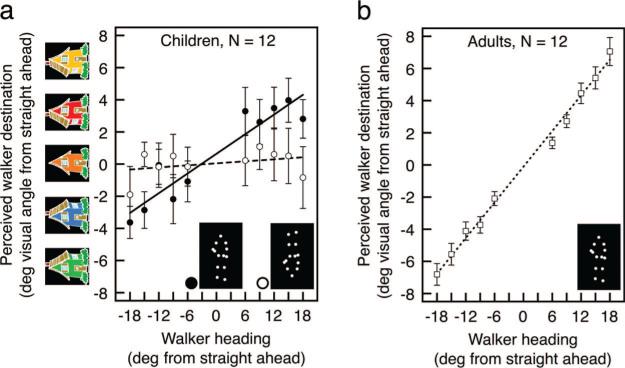Figure 2.
(a) Children's perception of an upright (filled black circles and black line) and inverted (open circles and dashed line) walker's heading. Positive slopes and a good linear fit indicate that children discriminated between the leftward and rightward headings. For example, children perceived the –18° walker in Figure 1 as headed approximately toward the green station on the left. Note that because the x and y axes contain different units of measurement, a response need not have matching values on the axes to reflect accurate perception of heading. Overall, children could discriminate heading differences up to 7.34°. (b) Adults’ perception of an upright walker's heading. Overall, adults could discriminate heading differences up to 1.42°. Error bars in both panels reflect ± standard error of the mean (adjusted for within-observer comparisons); in both panels, deg = degrees.

